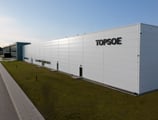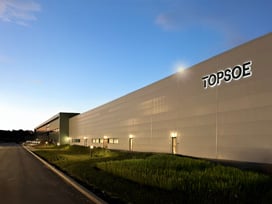A catalyst with unmatched high activity for the final pass of double absorption
The VK69 catalyst is designed specifically for the final pass(es) of double absorption plants. In the lean SO2 gas environment after the inter-pass absorption tower, the unique VK69 formulation offers unmatched high activity throughout the entire operating temperature range. This affords existing plants the opportunity to greatly reduce SO2 emissions and/or increase production rates.
For new or revamped plants, SO2 emissions of under 50 ppm are possible. Using cesium as a promoter, VK69’s extremely low ignition or “strike” temperature will significantly reduce pre-heat time and improve start-up performance.
The VK69 is manufactured in a unique 9 mm Daisy-shape. The high surface area contributes to the high activity in this gas environment and the high void-fraction ensures a low pressure drop and good dust tolerance.
-
possibility for over 50% reduction in SO2 emission from existing double absorption plants
-
possibility for significantly increased production without increasing SO2 emissions
-
less than 50 ppm of SO2 emissions possible from new or revamped plants--low ignition temperature for faster and cleaner start-ups
-
long lifetime and low screening losses industrially proven since 1996
Low ignition temperature
The VK59 and VK69 catalysts have an exceptionally low ignition or “strike” temperatures of 320-330°C (610-625°F) that offer new possibilities for faster and cleaner start-ups. Autothermal restarts can be accomplished after a significantly longer idle time without the use of pre-heat.
9 mm Daisy
VK69 is produced in the unique 9 mm Daisy-shape. In the low SO2 environment, after the intermediate absorption tower, the 9 mm size and Daisy-shape combination gives 30% extra activity compared to a 12 mm Daisy-shape, in part due to the higher surface area. Also, the Daisy-shape ensures remarkably low pressure drop. The high surface area of the 9 mm Daisy contributes to the high activity, and the high void fraction ensures a low pressure drop.
.png)









![SAF Airplane runway[1]-1 1](https://www.topsoe.com/hs-fs/hubfs/SAF%20Airplane%20runway%5B1%5D-1%201.png?width=800&height=640&name=SAF%20Airplane%20runway%5B1%5D-1%201.png)



